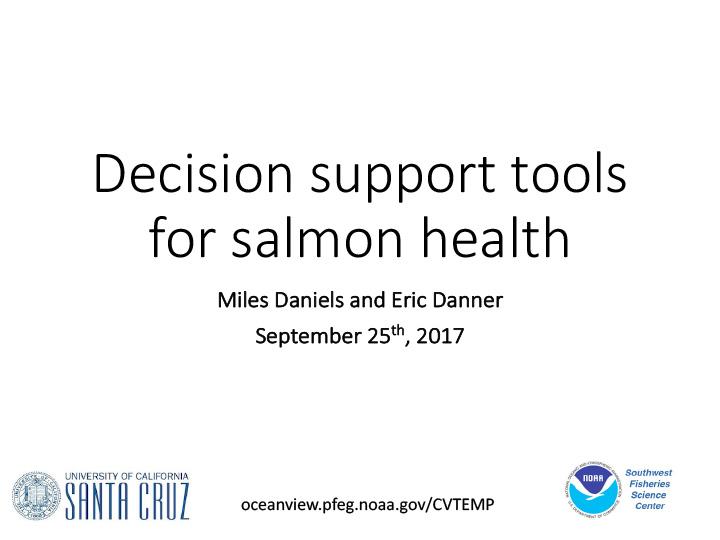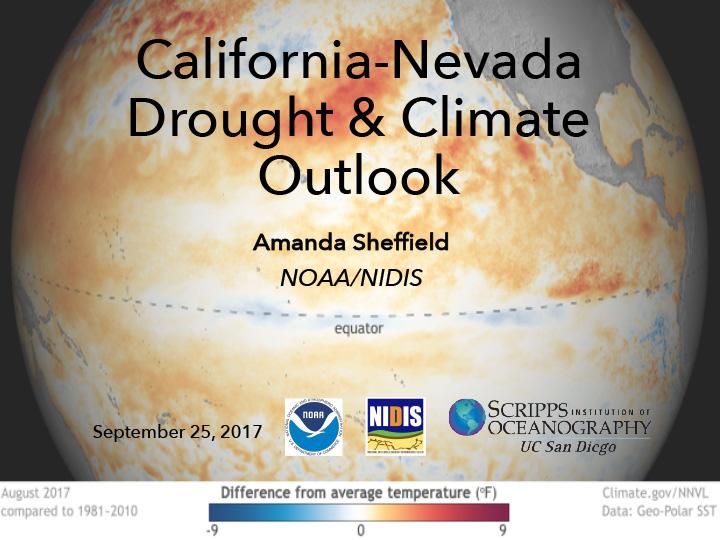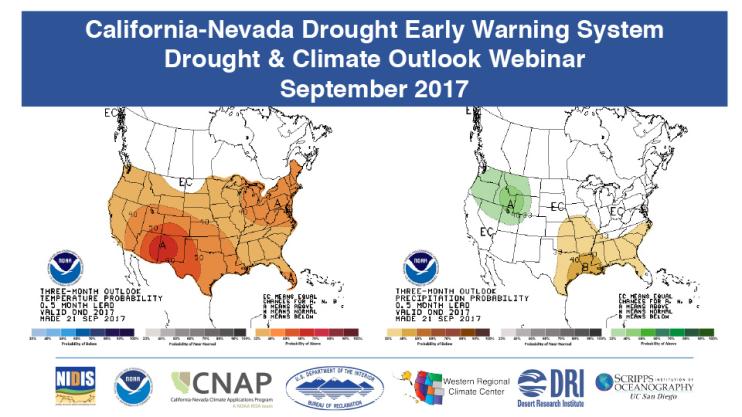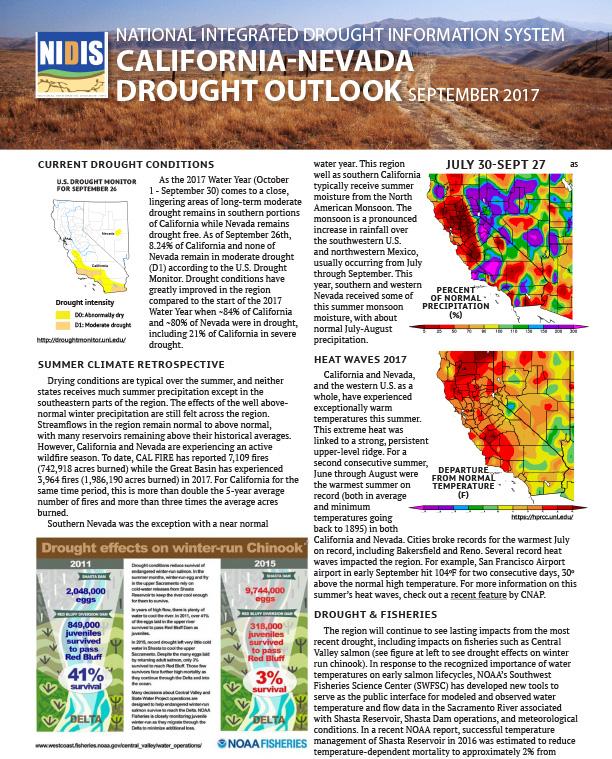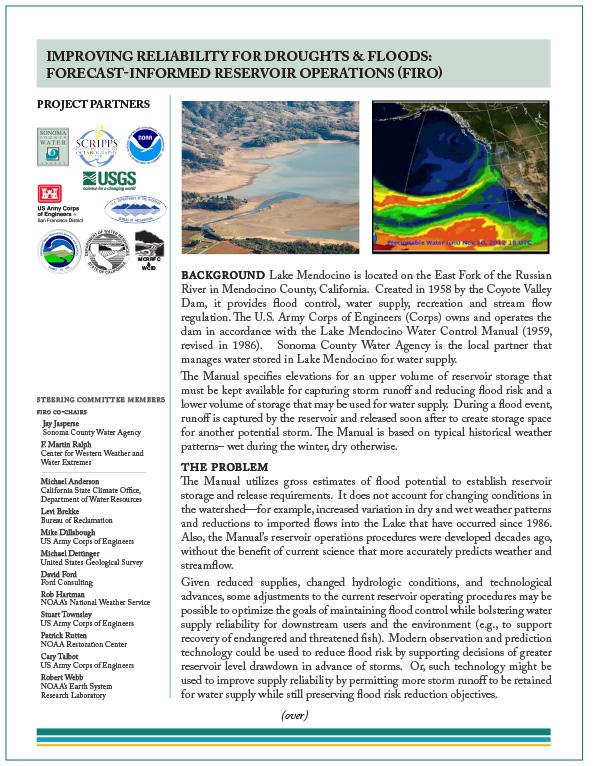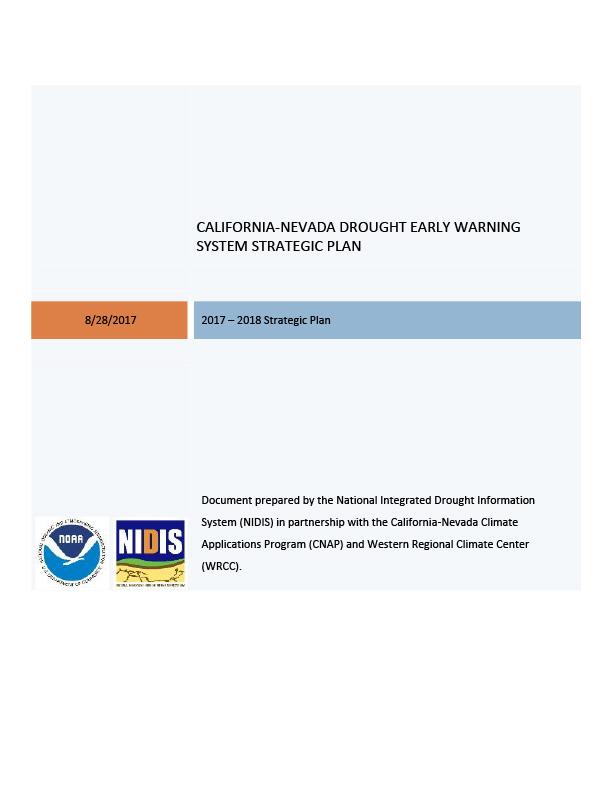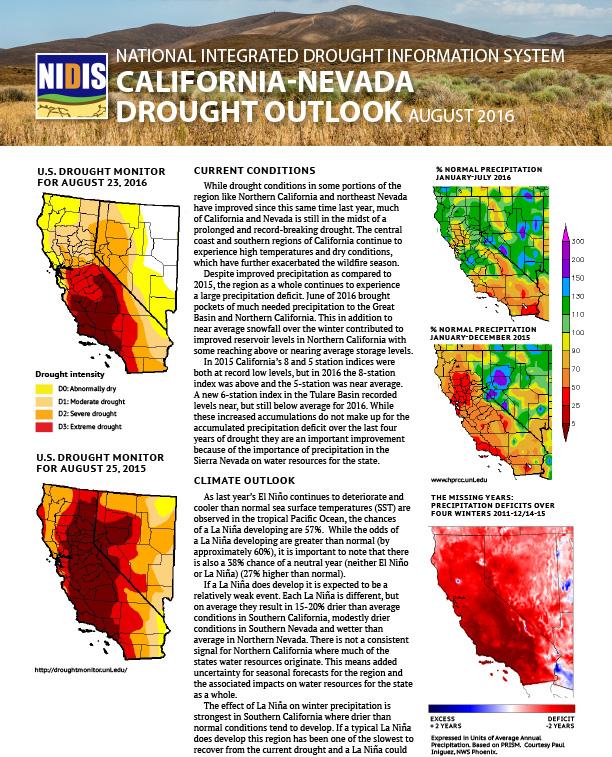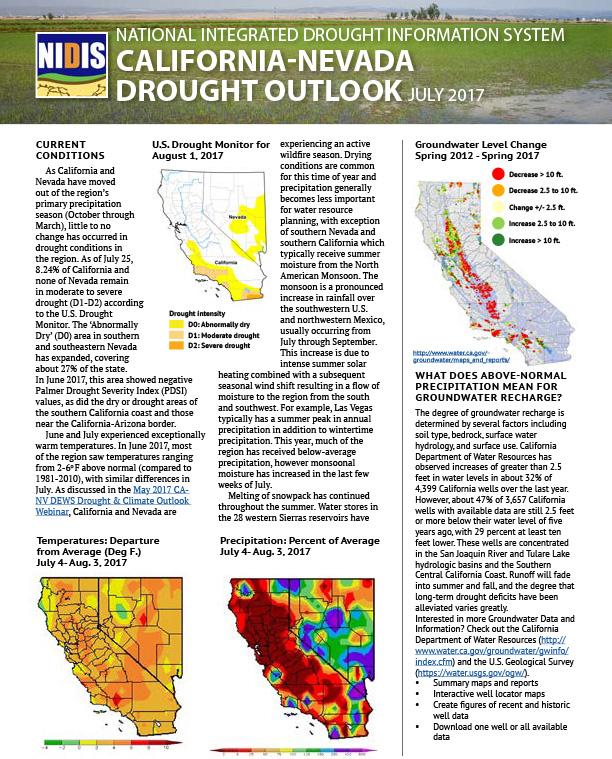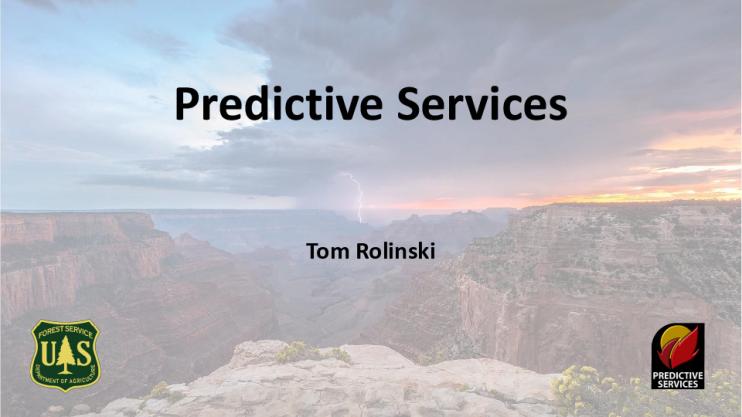Fisheries presentation from the September 25, 2017 California-Nevada Drought and Climate Outlook Webinar.
Outlook presentation from the September 25, 2017 California-Nevada Drought and Climate Outlook Webinar.
Drought and climate conditions update presentation from the September 25, 2017 California-Nevada Drought and Climate Outlook Webinar.
Opening presentation from the September 25, 2017 California-Nevada Drought and Climate Outlook Webinar.
Two-page summary of the most recent California-Nevada Drought and Climate Outlook Webinar.
A workshop was held in August 2014, at University of California San Diego/Scripps Institution of Oceanography. Thirty-two representatives from multiple agencies met for three days to scope out an appraisal-level FIRO study. A work plan is now being drafted for release in early 2015. The FIRO study is expected to occur over the next five years (depending on funding).
The California-Nevada Drought Early Warning System (DEWS) Strategic Plan outlines priority tasks and activities that build upon existing stakeholder networks to improve drought early warning capacity and long-term resilience in California and Nevada. It includes a list of current partners, outcomes, and key milestones. This Plan is a “living document” to which additional actions and partners may be added as needed.
Document developed from California-Nevada Drought Early Warning System Drought & Climate Outlook Webinar on Aug. 24, 2016. Includes information on current conditions, the climate outlook, impacts, state actions in response to drought. Graphics include U.S. Drought Monitor compared year-over-year conditions; percent of normal precipitation Jan.-July 2016 and Jan.-Dec. 2015; precipitation deficits during winters of 2011-2015; more.
Current conditions as of July 2017; climate outlook. Information about CAL-Adapt and how CNAP is providing drought scenarois for it, as well as a short section on “What does above-normal precipitation mean for groundwater recharge?”
A description of the predictive services and the fire potential in Southern California.


